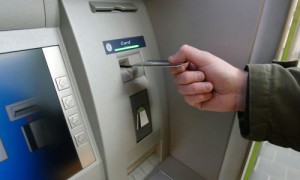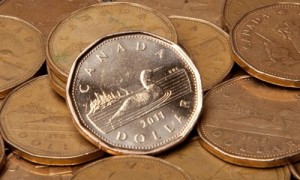The dollar to euro exchange rate is the lowest its been since the early 2000s, and if you’re an American who has been craving a European trip, now is the time to go. (See the end of this story for a sample money-saving itinerary.)
The dollar’s huge upswing against the euro ($1 = €0.91) is largely thanks to policy decisions in both monetary unions. The U.S. Federal Reserve is slowly backing away from its long quantitative easing program, while the European Central Bank is injecting funds into the Eurozone to stave off deflation.
The relative strength of the U.S. economy — which added 295,000 jobs in February — amid turmoil in Europe over debt crises in Greece, Spain and Italy is another factor in the rising disparity between the two currencies.
How is this showing up?
Cheap flights, for one. Thanks to a huge promotion from the Icelandic carrier WOW air that offers flights to Iceland for less than $200, U.S. travelers can fly to Reykjavik and then venture east to top tourist destinations at ludicrously low prices.
Once you’re on the continent, cheap airline carriers such as EasyJet and Ryanair can take you almost anywhere in Europe for less than $100.
The strength of the dollar, however, cuts both ways. Here are some potential impacts.
- While it will be easier for Americans to venture abroad this summer, a strong dollar might result in a steep drop in international tourism in the states.
According to Reuters, travelers from abroad typically spend more than $200 billion in the U.S., and a 10 percent appreciation of the dollar would cause a 2 percent decline in international tourism.
Luxury designer brands like Michael Kors, Tiffany and Kate Spade, who usually count on Europeans flocking to their stores in the summer, could be especially hurt by the dollar’s rise.
Some cities like New York — which had 9.9 million international travelers in 2013 — will likely still see a rise in overseas tourists, but Deutsche Welle points out that they might spend more conservatively on hotels, eating and shopping. Overall, Reuters says international travel to the U.S. will rise by 3.5 percent in 2015, as opposed to 5 percent over the past decade.
- A strong dollar is also threatening manufacturing. The Wall Street Journal wrote early last week that U.S. manufacturing is expected to grow by 5.6 percent based on January numbers, the fastest pace in four years.
The greenback’s rise, however, could slow that growth down as American exports become more expensive.
A Sample Itinerary
In light of cheap flights to Iceland and the euro’s fall, I planned a theoretical trip for an adventurous American with a $4,000 budget.
The journey begins on June 4 and brings our lucky traveler (from the D.C. area) to Reykjavík, Paris, Berlin and Budapest for less than a grand in air travel.
Paris, one of the most expensive cities in the world, will probably be where our adventurer will drop the most dough.
The other three cities should be inexpensive thanks to favorable exchange rates ($1 = 136.777 Icelandic Krona and $1 = 277.93 Hungarian Forint), and cheap room and board options in Berlin. (Who knows, he/she might drop everything and join Europe’s “post tourist capital” for good.)
They’ll return on June 22 refreshed and satisfied that they took advantage of the dollar’s appreciation.
Here’s the itinerary:
• Jun 4: WOW air, $226, 7:25pm Baltimore (BWI) to Reykjavík (REK)
• Jun 8: WOW air, $136, 11:50am Reykjavík (REK) to Paris (CDG)
• Jun 11: easyJet, $44, 9:20am Paris (CDG) to Berlin (TXL)
• Jun 16: easyJet, $44, 3:20pm, Berlin (SXF) to Budapest (BUD)
• Jun 19: AirBerlin, $212, Budapest (BUD) to Reykjavík (REK)
• Jun 22: Wow air, $271, 3:30pm, Reykjavík (REK) to Baltimore (BWI)
In total, our traveler will spend $933 on air travel, leaving them with $3,067 to spend on room and board.
Bon voyage!
***
Learn how to cover money better on your beat. Register for one of our upcoming workshops.











